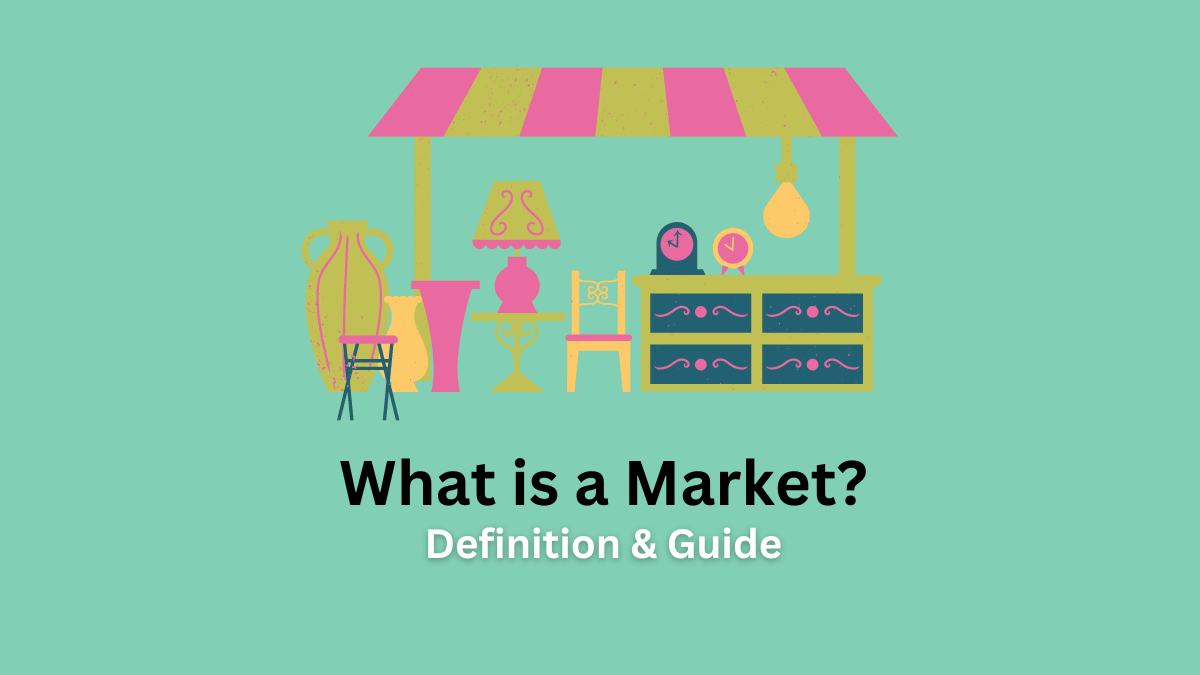What is a Market?
A market is a gathering place where individuals come together to exchange goods and services. These participants, predominantly buyers, and sellers, can either interact face-to-face in physical settings like retail stores or engage virtually through online platforms.
Key traits define a market, encompassing the presence of a space for exchange, involved buyers and sellers, and a tradable commodity. In essence, a market acts as a hub where buyers meet sellers to negotiate transactions for products and services.
This interaction can span physical and digital domains, enabling buyers to access desired items and sellers to connect with potential customers. Essential features include sellers, buyers, and the availability of products for trade.
Overall, a market signifies a platform where multiple parties engage in the exchange of goods, services, and information.
Characteristics of a Market
A market is not just a place; it’s a complex ecosystem where products and services find their value and utility. Let’s explore the six essential features of markets.
Related: Definition of Marketing
Exchange Facilitation
Markets are platforms designed to facilitate the exchange of goods, services, and information between buyers and sellers. It’s the dynamic where products find new owners and services fulfill specific needs.
Buyers and Sellers
The cornerstone of any market is the presence of buyers and sellers. Buyers seek products that match their requirements, while sellers offer these products for purchase.
Commodity Focus
Markets center around commodities, which are the goods or services being bought and sold. These commodities vary, spanning tangible items like clothing and electronics, as well as intangibles like services or intellectual property.
Physical and Virtual Dimensions
Markets can manifest physically, allowing buyers and sellers to interact face-to-face. Conversely, they can be entirely virtual, where online transactions occur across geographic boundaries without physical contact.
Demand and Supply Influence
The dynamics of supply and demand within a market dictate the pricing and availability of commodities. High demand often leads to higher prices, while oversupply can lead to price reductions.
Multiplicity of Markets
Markets are diverse and can be categorized into different types based on their nature, such as consumer markets, financial markets, and virtual markets. Each type caters to specific needs and preferences.
Related: Roles and Responsibilities of a Marketer
How Does Market Work?
The way a market operates is like a bustling hub of activity where buyers and sellers come together to make exchanges happen. Think of it as a dynamic meeting place where things are bought and sold.
At its core, a market works by bringing together people who want something and people who have what they want. Buyers look for products they need or want, while sellers offer those products. The interaction between these two groups influences the prices and availability of goods and services.
Market transactions are guided by the forces of supply and demand. When a lot of people want something and there’s not much of it available, the price tends to go up. On the other hand, when there’s plenty of something and not as many people want it, the price usually goes down.
So, a market is like a lively dance of buying and selling, driven by what people desire and how much of it is around. Whether it’s happening face-to-face in a physical store or online in a virtual space, the market is where the action unfolds.
Types of Markets
While, physical and virtual are two basic types – based on the nature the market can be categorized into numerous types. Some of the markets are mentioned below:
- Physical Markets: These are traditional marketplaces where buyers and sellers physically gather to exchange goods and services. Think of bustling bazaars or local farmers’ markets.
- Virtual Markets: In these markets, buyers and sellers interact and trade online, without needing a physical presence. Websites like eBay and Amazon exemplify virtual markets.
- Auction Markets: Here, sellers offer goods to potential buyers through bidding. The highest bidder gets the product, making it an exciting way to determine prices.
- Consumer Markets: This market caters to the average consumer. It includes goods and services purchased for personal use, like clothes, electronics, and groceries.
- Business-to-Business (B2B) Markets: In these markets, businesses trade with other businesses. They supply raw materials, machinery, and services needed for production.
- Financial Markets: These markets deal with assets like stocks, bonds, and currencies. Investors buy and sell these assets, affecting their prices.
- Black Markets: Operating illegally, black markets deal in prohibited goods, like drugs or counterfeit items. These markets often thrive in areas with restricted regulations.
- Online Markets: These are e-commerce platforms where buyers and sellers connect over the Internet, making shopping and trading convenient.
- Stock Markets: A subset of financial markets, stock markets allow investors to buy and sell shares of companies, influencing their values.
- Global Markets: These markets operate on a worldwide scale, involving international trade and commerce. They connect economies across borders.
Arti Kushmi holds a BBS (Bachelor in Business Studies) degree and shares her business and marketing knowledge through this website. While not writing she will be reading and enjoying the moment.
